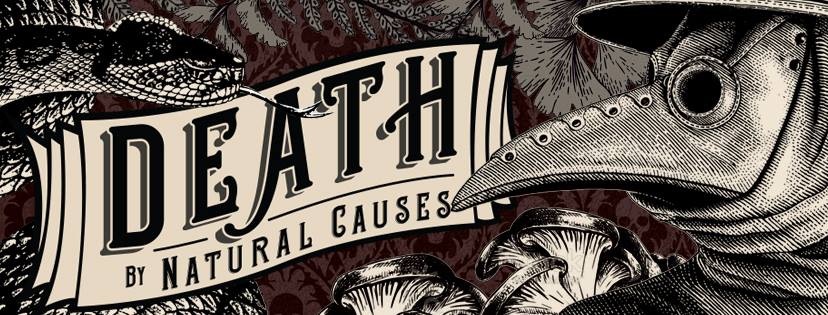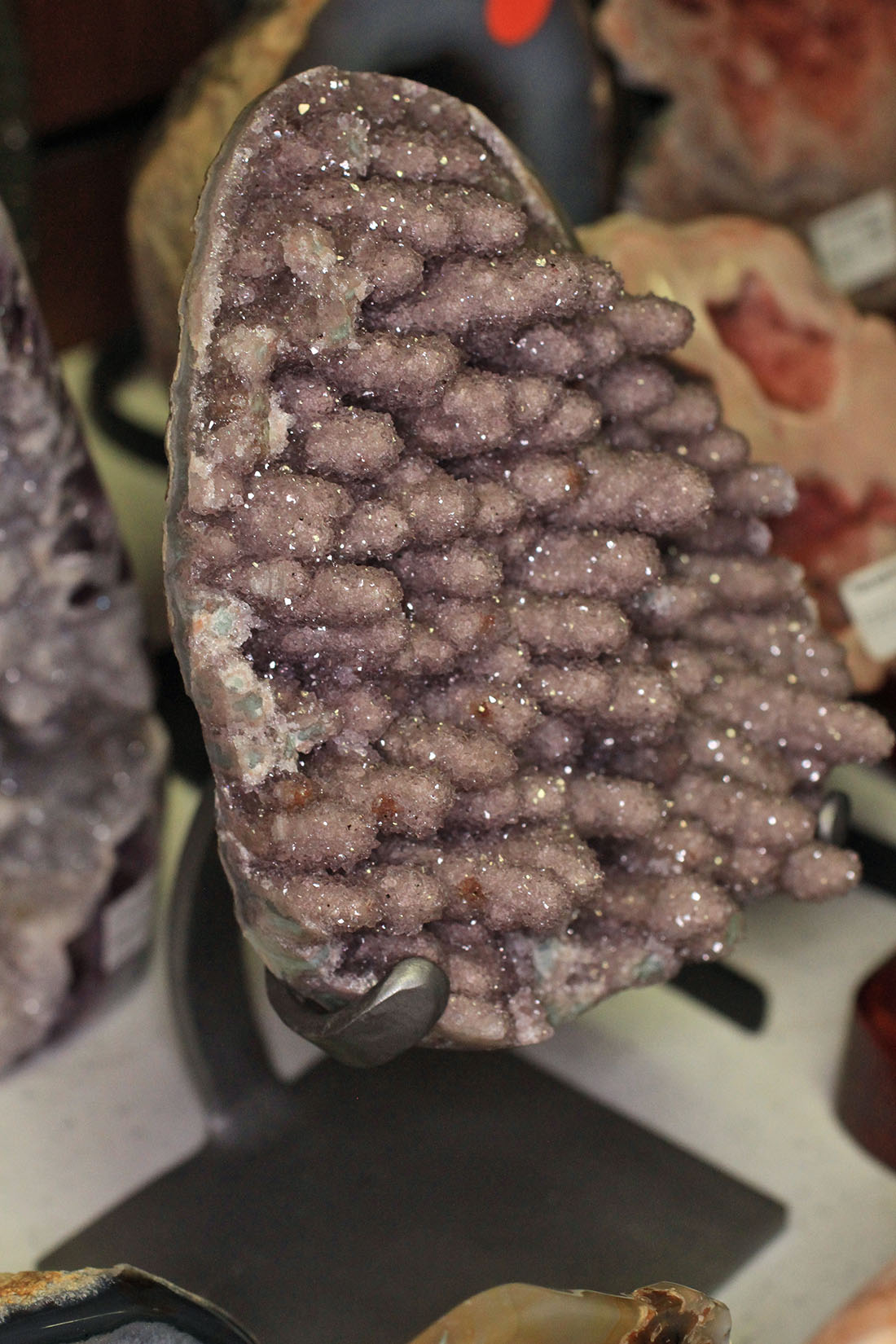By Alexander Ruff, HMNS Concierge and Discovery Guide
What are minerals? Supplements that you take every morning? In some cases sure. When we think of minerals it usually coincides with vitamins, but for geologists and your everyday rock hounds, minerals have a whole different meaning. As the chain of geology goes, atoms make up molecules, molecules make up minerals and minerals make up rocks. Minerals are natural, inorganic, solid substances with a set crystalline structure. That means that some “gems” such as opal and amber are not technically minerals because they do not follow the last rule. Today we will be discussing a few unique minerals that may be harmful to your health!
Beautiful. Amazing. Rare. These are words that may come to mind when looking at minerals. Many of the specimens from our Cullen Hall of Gems and Minerals embody those words. However, one word that may not come to mind when looking at these beautiful specimens is deadly. Certain minerals that we have on display in our hall can be harmful to humans. So what makes these minerals toxic? The toxicity comes from elements like lead and arsenic and a few others. These elements are toxic to the human body and have the potential to harm if not handled properly.
For example, cerussite and galena each contain the toxic element lead, while stibnite contains antimone. Being exposed to these minerals for a short amount of time is perfectly fine. However, the problem arises during prolonged exposure, inhalation or digestion.
Take a look above at one of our examples of cerrusite. It is a beautiful, radiant mineral. That radiance comes in part from it’s lead content. Just like with lead crystal… the addition of lead raises the clear substance’s index of refraction. But in the case of cerussite, it happens naturally!
Contact with the mineral itself is not super hazardous and in fact many people collect specimens of it, but it’s still a good idea to wash your hands after you touch it! Part of the reason that handling cerussite is not usually a problem is because people don’t wear it, they usually just put it on a shelf. Cerussite isn’t commonly used as a jewelry gemstone because it’s a very soft mineral, it only has a hardness of 3-3.5 on the Mohs hardness scale. To give you some content, your fingernail rates a 2-2.5. There are a lot of things we come into contact with every day that are harder than cerussite, so even before the hazards of lead poisoning were understood people knew it wasn’t a great idea to spend a lot of time or money using the mineral in jewelry when it was just going to get scratched up with daily use. That’s also the story with several other specimens in our Cullen Hall of Gems and Minerals—even ones that are completely harmless—like rhodochrosite, they’re just too soft to be your favorite piece of jewelry! Of course, in the case of cerussite we now know that not only is it getting scratched up but it’s potentially poisoning you as well.
Our ancestors were not so lucky when it came to their use of galena, read on to learn why.
The galena specimen in our Gems & Mineral Hall is a cool looking piece. Cubic with a metallic sheen; this is the mineral’s habit, or characteristic external shape, but it is often found in less perfect forms depending on where it was discovered. Like cerussite, galena is partly composed of lead and is also a soft mineral. However contrary to discouraging its use, the softness of galena made it an ideal raw material for cosmetics and paints. Ancient Egyptians often used galena to make eyeliner. This means that if you were a wealthy Egyptian, you may have applied lead around your eyes every day!
Lead poisoning doesn’t usually happen quickly. It takes continued exposure for months or even years until enough of the metal has built up in your system to cause nervous system or digestive problems. The average lifespan in ancient Egypt was about 35 years old, so most Egyptians may not have lived long enough to suffer the severe effects of lead poisoning given the small doses they were consuming.
Another strange looking mineral you will see in our hall is Stibnite. And incidentally, stibnite was also used by the ancient Egyptians to make dark colored pigments. But in this case lead is not the toxic ingredient, antimony is. Another unique quality about stibnite, besides its toxicity, is its appearance. It looks something like Superman’s fortress of solitude. And although its steely apearance may make it look hard and durable, it’s actually very soft. You could snap an end off of one of those crystals with your bare hands!
Other minerals that you should look out for are, realgar, orpiment, and cinnabar. Realgar and Orpiment contain arsenic. Cinnabar contains mercury. There’s a famous phrase: “if looks could kill…” In the case of some of the minerals in our collection, that compliment is apt. Some of the most mesmerizing and artistic looking pieces are also some of the most deadly. Luckily as long a you don’t go around licking our specimens, you should be okay.










